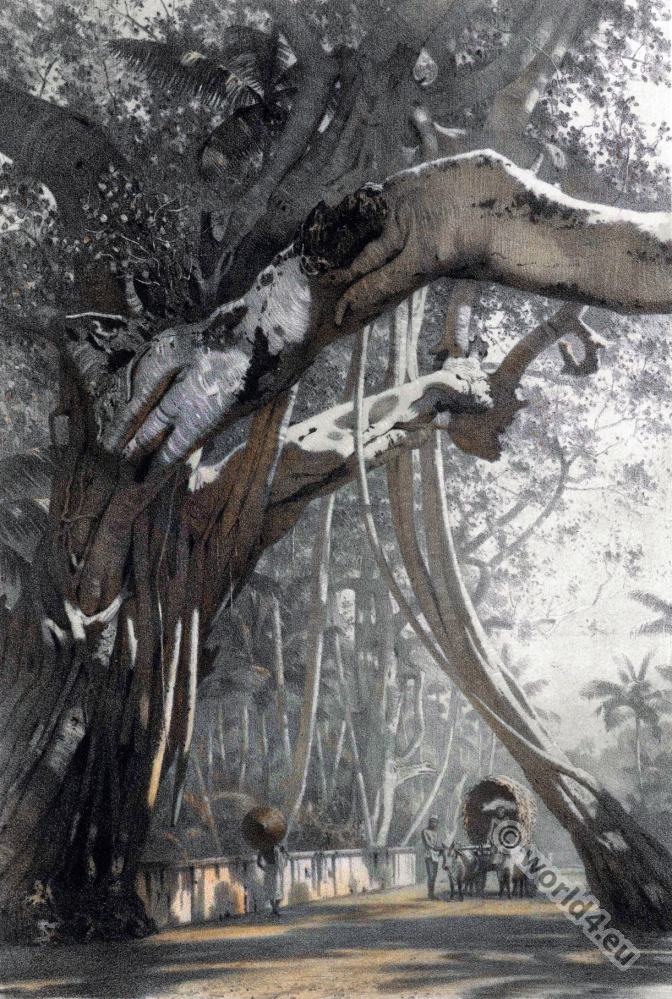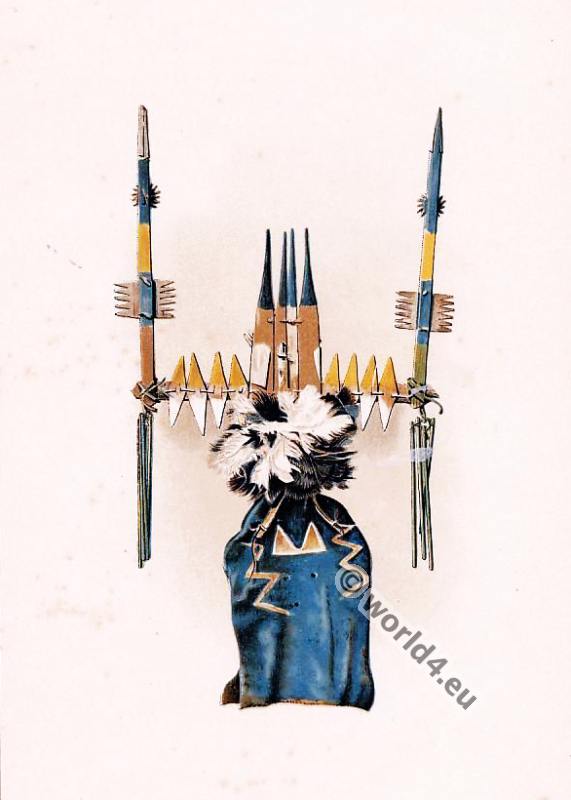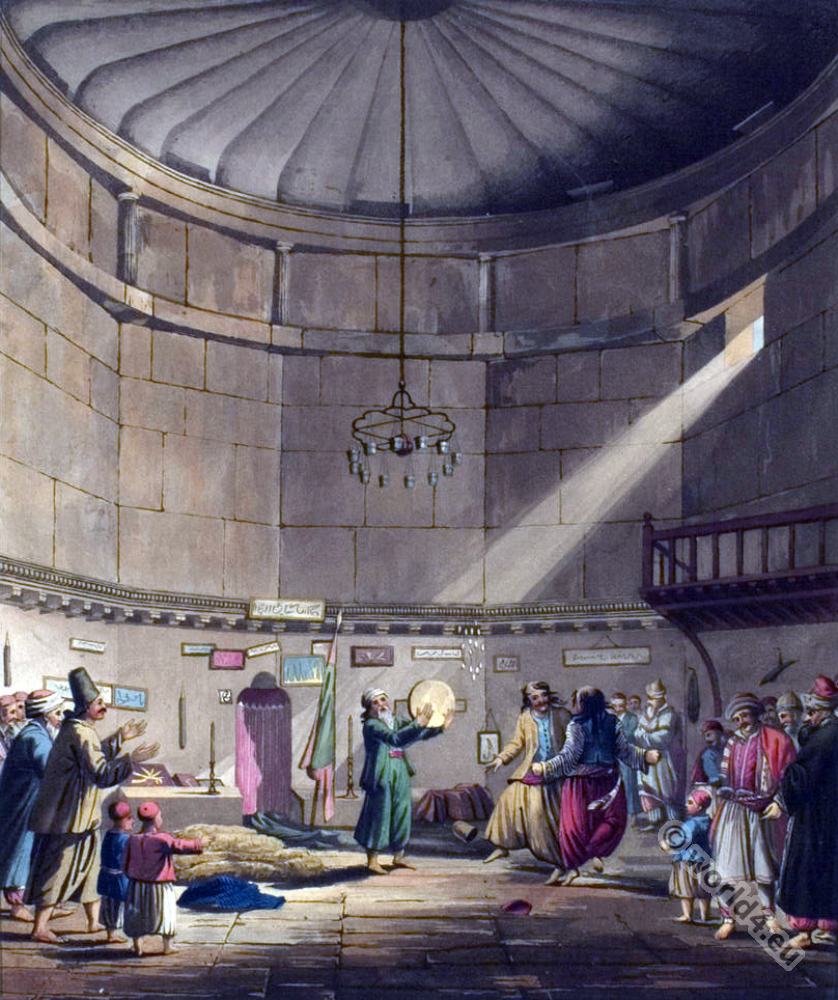ITALIAN SCENERY, MANNERS, AND CUSTOMS.
PLATE VI.
THE DANCE OF THE TARANTELLA.
Most countries have a national dance, which is a favourite with the majority of the people; but it is generally confined to the lower class, for which reason, however, it is the more known, and the more celebrated. What the fandango is to the Spaniards, the tarantella is to the Neapolitans; and the seriousness of the former, and the vivacity of the latter, are admirably portrayed in the tunes of the two dances.
We have already noticed the skill of the Neapolitan women on the tambourine; but we see in the plate one playing on the guitar; and it is to be observed, that the Neapolitans are equally skilful on this instrument. The Spanish guitar is nearly twice the depth of the Neapolitan; and it is this alone that constitutes the difference between them. The instrument in the plate before us, however, is that species of guitar which is called the lute. It is a favourite instrument in Lower Italy; and is the sweetest in point of sound, as well as more extensive in compass.
The woman is dancing with castanets, which at Naples are called castagnette, and in Tuscany nacchere. This instrument is a species of the ancient cymbalum, as the tambourin is of the tympanum, which in some medals is one of the attributes of Ceres. The man who is dancing holds a riband in his hand, and with it forms a variety of attitudes, which are at once whimsical and entertaining.
At the commencement of the dance the man and woman are stationed opposite each other: they advance, retire, change places, and look passionately at each other, with movements and gestures full of expression. The position of the feet is generally as here represented, only that the right and the left are alternately brought foremost; and sometimes the dancers show their skill by dancing either on their toes or heels.
It is not certain whether the appellation of tarantella, given to this dance, come from the territory of Taranto, or from the spider called tarantola, many of which are there found, and the bite of which has been said to be mortal, unless cured by dancing to a brisk tune, like that appropriated to this dance. The wonderful effects of the venom of this spider are so improbable, that, though formerly an article of common belief, both the disease and cure are now generally discredited. This dance, however, has been so much spoken of, that we have thought proper to annex the tune.
Source: Italian scenery; representing the manners, customs, and amusements of the different states of Italy by James Godby. London 1806.
Discover more from World4 Costume Culture History
Subscribe to get the latest posts sent to your email.







